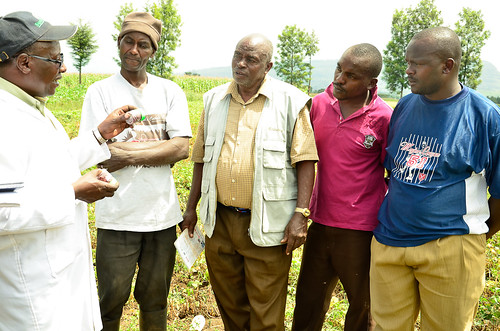| Getting your Trinity Audio player ready... |
After 60 years, Kenya now has four bean varieties that meet the industry criteria for canning quality. These are the first new varieties since the Mexican 142 bean variety was introduced in the late 1960 from Tanzania.
This achievement is all thanks to a Bio Innovate programme project on value added bean varieties favorable for canning and can also cook faster hence saving on energy.
“These varieties will ensure steady supply of high quality canning beans for the canning industry and good certified seed back up and technical support. Currently, Kenya relies on imports because of very low and erratic local production due to lack of certified seed, susceptibility to diseases, drought and low yield potential of available varieties,” Prof Paul Kimani, the lead scientist who is a plant breeder from the University of Nairobi department of plant science and crop protection, said.
The bean varieties include KCB 13-01, KCB 13-02, KCB13-03, KCB13-04, KCB13-05, KCB13-06, KCB13-07, KCB 13-08, KCB13-09 and KCB13-10.
HIGH QUALITY: Some of the new bean varieties that are fast cooking.
(Photo credit: ILRI/Albert Mwangi)
All major grain types canned by Kenya industry represented plus new types such as pinto, speckled sugar popular in South Africa, Zimbabwe and Zambia and carioca (popular in Brazil and Zambia.)
The varieties are fast cooking, taking 27 to 42 minutes when soaked, unlike other ordinary beans that take three hours to cook; this saves on time for the consumers and on energy.
“They have a high yield potential compared to other varieties and most important are drought tolerant and resistant to several diseases such as angular leaf spot, anthracnose, root rots common bacterial blight and bean common mosaic virus,” he added.
This project cost about $1 million (Kshs. 87 million) and aims at enhancing food security, nutrition, income and resilience to cope with climate change and variability challenges in Eastern Africa and is supported by Bio Innovative programme in partnership with Trufoods Limited.
The new canned bean variety, according to Kimani, are superior to the Mexican 142 which is the industry reference variety in terms of agronomic, disease resistance, drought tolerance, water uptake, swelling after soaking and other canning and sensory characteristics. ” They also have an excellent upright growth habit which is a characteristic that farmers will be happy about since it has a high harvest index.”

INNOVATIVE: Prof Paul Kimani explains the benefits of the new bean varieties
to farmers in Bahati, Nakuru County. (Photo credit: ILRI/Albert Mwangi)
Bean canning started in 1937 in Arusha where varieties were introduced from Europe and USA and tested for canning but few of those varieties met the criteria set by the canning industry. These varieties were grown in Northern Tanzania and exported to Europe for canning since there were no canning factories in the region. One of the few varieties that met most of the criteria was the Mexican 142, which was later introduced to Kenya and Uganda in 1960.
“The variety did well in Kenya and stimulated the current bean canning firms and from Kenya, the variety was exported to Ethiopia in 1970s. Although it had problems with disease and poor growth habit, Ethiopia found good markets to export in Europe and Middle East. The number grew and demand for the white pea (or navy bean) grew and it became a major export of Ethiopia,” he explained.
Dr Seyoum Leta, Bio-Innovate Programme manager said Kenyan farmers do not produce the industrially preferred beans suitable for canning due to lack of seed and the canning industry in Kenya therefore imports its entire consignment of beans for processing from Ethiopia.
“The canning industry in Kenya has a capacity to produce over 400 tons of canning beans per year but currently only handles 150 tons because Ethiopia can only supply this tonnage,” said Leta.
Kimani pointed out that long cooking time for beans is a major problem and few rural or urban consumers can afford the cost of fuel to cook beans on a regular basis so they are resorting to canned or pre-cooked beans, or green beans, which cook much faster.
“To meet the growing demand, it is necessary to develop more productive varieties that are tolerant to frequent droughts and ensure quality seed is available. Bean is one of the most important food and nutritional security in Kenya. Most of the other food security crops are energy rich maize, potato, rice, sweet potato, banana, cassava and this leaves a huge deficit of protein and minerals, beans fill this gap very well,” Kimani said.
Leta also noted the unmet demand for seed and grain beans possessing preferred industrial quality, nutritionally enhanced and agronomically adaptable to current climate challenges, adding that this shortfall is what the programme is hoping to address.
“The project is being implemented in Kenya, Ethiopia, Rwanda, Tanzania and Burundi. We hope this will enable the smallholder farmers in the region to have a ready market to sell their bean produce through contract farming which will in turn stimulate small farmers to grow beans and earn increased income that will improve their livelihoods,” Leta said.


